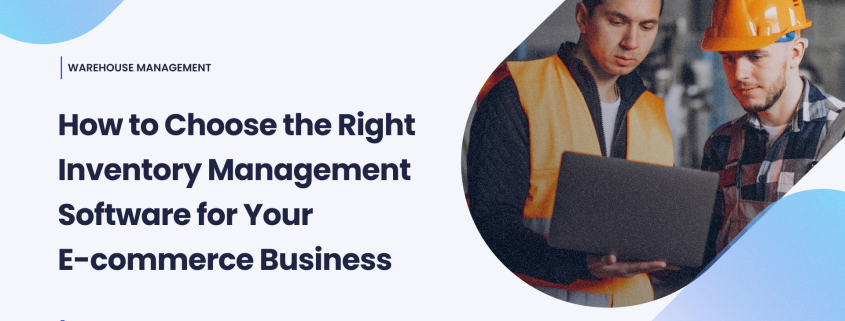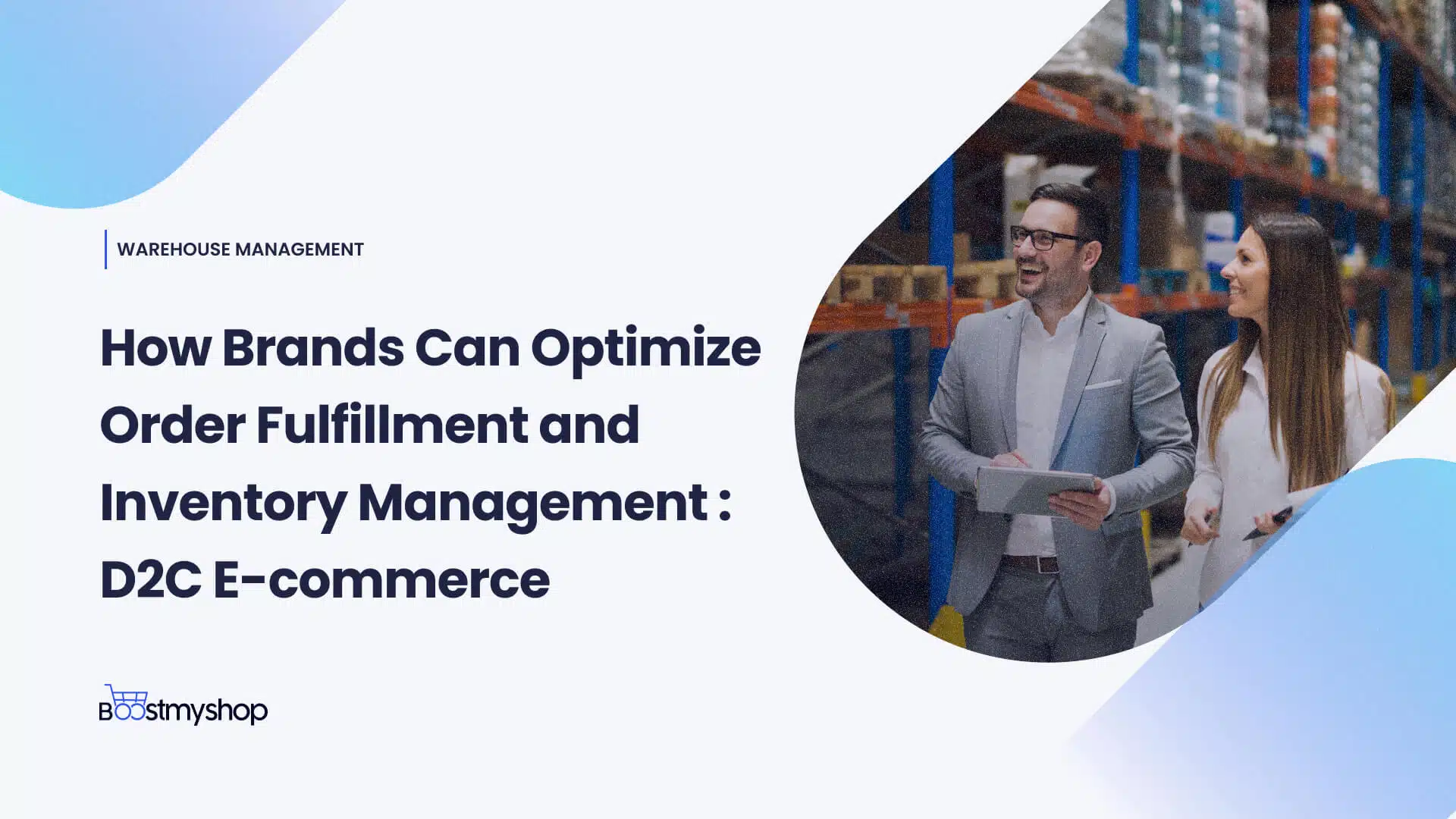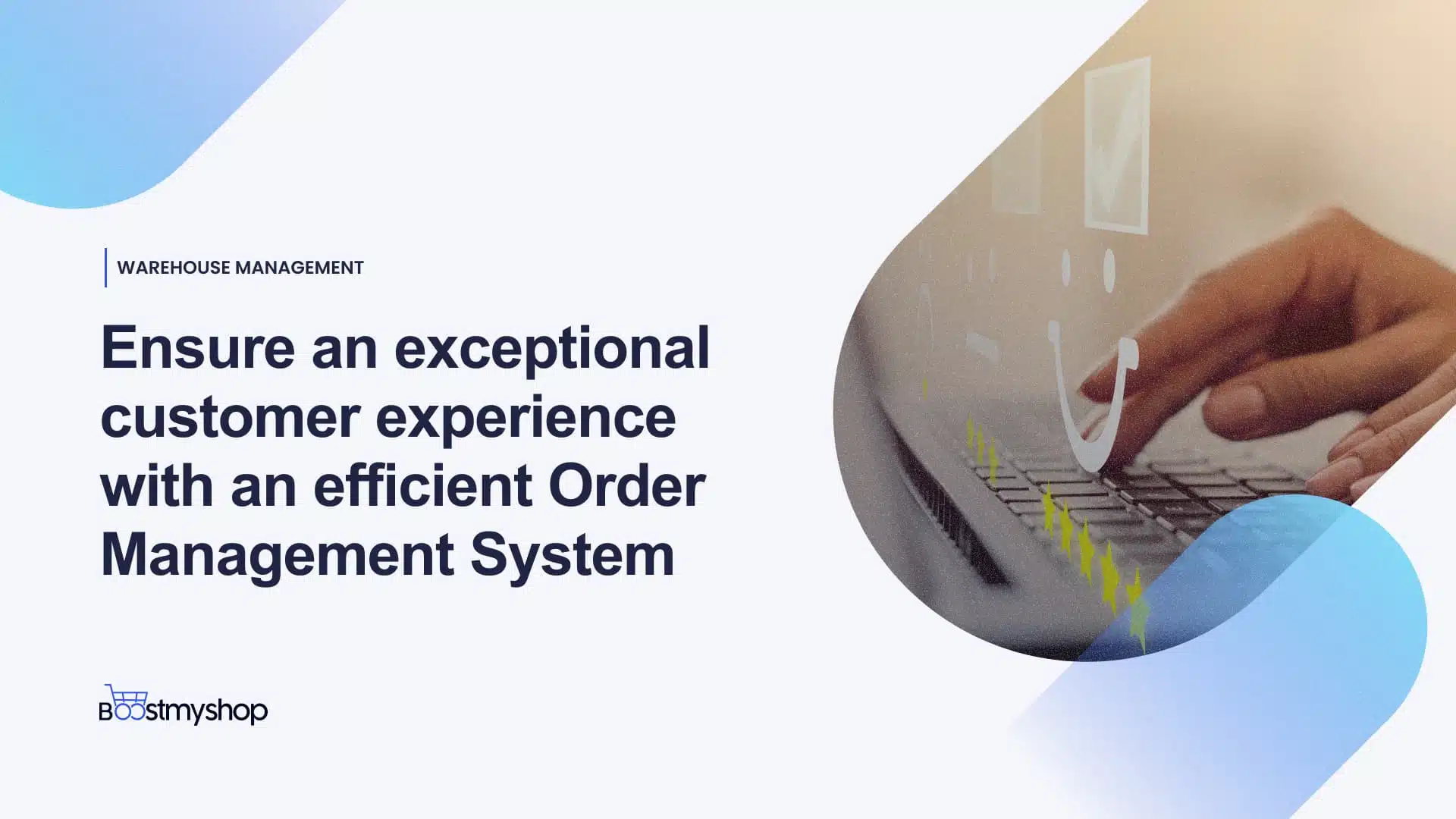How to Choose the Right Inventory Management Software for Your E-commerce Business
Why Inventory Management is Crucial for E-commerce Success
Introduction
Imagine a scenario where your best-selling product goes out of stock just as holiday shopping peaks. Or worse, a customer places an order only to find out later that the item isn’t actually available. These issues, stemming from poor inventory management, are not just inconvenient-they’re costly.
According to the IHL Group, retailers worldwide lose a staggering $1.75 trillion annually due to overstocking, understocking and inventory mismanagement. That’s a number too big to ignore.
Inventory management is the backbone of success. The challenges intensify as businesses scale: managing diverse product lines, syncing inventory across multiple sales channels and ensuring real-time updates to meet customer expectations. Add to this the complexities of seasonal demand fluctuations, supplier delays and warehouse inefficiencies and it’s easy to see why inventory management is no small task.
This guide aims to simplify the journey for e-commerce merchants by helping you navigate the world of inventory management software. From identifying essential features to evaluating top solutions, we’ll walk you through the key considerations to ensure you choose a system that meets your unique needs. By the end, you’ll have a roadmap to not only streamline your operations but also future-proof your business with tools like MyFulfillment, designed to tackle inventory challenges head-on.
Let’s dive in!
What is Inventory Management Software?
Definition: The Backbone of Efficient Operations
Inventory management software is a digital solution designed to streamline the way businesses track, manage, and optimize their inventory. At its core, it helps merchants monitor stock levels, forecast demand, manage product availability across multiple sales channels, and ensure timely order fulfillment. It replaces cumbersome manual tracking methods like spreadsheets, providing automation and precision that’s essential for growing businesses.
Some of the primary functionalities include:
- Tracking Stock Levels: Ensuring you know exactly what’s available, what’s running low, and what’s overstocked.
- Demand Forecasting: Using historical data and trends to predict future inventory needs, avoiding overstock or stockouts.
- Multichannel Management: Synchronizing inventory across platforms like Shopify, Magento, Amazon, and eBay.
Why Inventory Management Matters for E-commerce
The stakes for e-commerce businesses are particularly high when it comes to inventory management. Here’s why:
High Order Volumes: With e-commerce booming, even small merchants can see spikes in order volumes, especially during sales or holiday seasons. Managing this manually can lead to costly mistakes.
Multichannel Sales: Selling across platforms like Amazon, your own website, and social media requires seamless synchronization to avoid overselling or underselling.
Fluctuating Demand: Demand can change rapidly, influenced by trends, seasons, and promotions. Poor demand forecasting can result in unsold inventory or missed sales opportunities.
For e-commerce, a single misstep-like sending the wrong product or being out of stock-can lead to unhappy customers, bad reviews, and lost revenue. This is where inventory management software becomes critical.
Key Features to Expect in a Reliable Solution
Real-Time Inventory Updates
With up-to-the-minute stock tracking, you’ll always know what’s available. This minimizes errors like selling an item that’s already out of stock or over-ordering products you don’t need. Real-time updates also reduce manual reconciliation work between sales and inventory records.
Multichannel Integration
Inventory management software should integrate seamlessly with your sales platforms, warehouses, and suppliers. For example, a robust system syncs inventory levels across Shopify, Amazon, and Magento, ensuring consistency no matter where customers shop.
Reporting and Analytics
Detailed insights into sales patterns, stock turnover, and inventory value empower businesses to make informed decisions. For example, analytics can help identify slow-moving products that may need discounts or promotions to clear.
Demand Forecasting
Using AI and historical data, demand forecasting tools predict future sales trends, helping you plan inventory accordingly. This feature is invaluable for handling seasonal spikes and preventing overstock or stockouts.
Key Features to Look for in Inventory Management Software
Real-Time Inventory Tracking
Real-time tracking ensures that your stock levels are updated instantaneously across all platforms, minimizing the risk of overselling or overstocking. This feature is especially important for e-commerce businesses managing high order volumes or selling across multiple channels. For example:
- Stockouts Prevention: Alerts you to low inventory before a product goes out of stock, avoiding lost sales.
- Overstock Avoidance: Tracks slow-moving products to prevent excess inventory.
Multichannel Integration
For e-commerce merchants selling on platforms like Shopify, WooCommerce, Magento, and Amazon, integration across these channels is critical. It syncs inventory, ensuring customers never face “out of stock” messages on one platform while items remain available on another.
Benefits:
- Centralized inventory management across online stores, marketplaces, and physical locations.
- Reduces manual data entry, saving time and minimizing errors.
Demand Forecasting
Advanced inventory management software utilizes AI and historical data to predict stock needs based on seasonal trends, promotional campaigns, or sales spikes.
Advantages:
- Reduces excess inventory by accurately forecasting demand.
- Ensures readiness for peak seasons or flash sales.
Order Management
Order management centralizes all order-related tasks-from processing to fulfillment-ensuring faster and more accurate delivery.
Key Features:
- Combines orders from multiple channels into a single dashboard.
- Automates shipping label generation and fulfillment workflows.
- Provides visibility into order status for better tracking and customer updates.
Automation Capabilities
Automation significantly reduces manual effort, allowing businesses to focus on growth. Common automation features include:
- Barcode Scanning: For accurate inventory logging during receiving and shipping.
- Automated Reordering: Alerts when stock falls below a certain threshold, automatically triggering reorders.
- Stock Updates: Ensures seamless synchronization across all sales platforms.
Customizable Reporting
Reporting and analytics provide valuable insights into inventory performance, sales trends, and overall business health.
What to Look For:
- Customizable dashboards to track metrics specific to your business.
- Reports on best-selling products, slow-moving inventory, and inventory turnover rates.
- Integration with financial tools to calculate costs like carrying and procurement expenses.
Evaluating Your Business Needs
Size and Scale of Your Business
Inventory management software isn’t one-size-fits-all.
- Small Businesses: Look for affordable, easy-to-use solutions with essential features like stock tracking and order management.
- Medium Businesses: Choose scalable software with advanced reporting and multichannel integration to handle increased complexity.
- Large Enterprises: Opt for enterprise-grade systems capable of managing thousands of SKUs, multiple warehouses, and international operations.
Sales Channels
Evaluate which platforms you sell on-whether Magento, Shopify, Amazon, or others-and ensure the software integrates seamlessly. Lack of integration can result in manual tracking, which leads to errors and inefficiencies.
Pro Tip: Platforms like MyFulfillment offer compatibility with major e-commerce platforms, making them ideal for omnichannel merchants.
Complexity of Operations
Businesses with complex workflows, like managing multiple warehouses, SKUs, or suppliers, need software with advanced features:
- Warehouse management systems (WMS) for streamlined operations.
- Tools for batch tracking and expiration management (especially important for perishable goods).
- Automation capabilities for seamless fulfillment.
Budget Considerations
Costs vary widely depending on the software’s features and scale. Consider:
- Licensing Fees: SaaS models often charge a monthly or annual fee.
- Implementation Costs: Includes setup, training, and data migration.
- Hidden Costs: Check for fees related to integrations, customizations, or additional users.
Advice: While budget is important, don’t compromise on essential features that directly impact efficiency or customer satisfaction.
By prioritizing these features and aligning them with your business needs, you can select inventory management software that not only fits your current operations but also scales as your e-commerce business grows. MyFulfillment, for example, excels in combining all these capabilities into one solution, making it an excellent choice for merchants aiming to optimize their inventory and order processes.
Top Inventory Management Software for E-commerce
Selecting the right inventory management software can transform your e-commerce operations, especially if your business spans multiple platforms and sales channels.
At Boostmyshop, MyFulfillment is the solution built to cater to a wide range of CMS platforms, including Shopify, Magento, WooCommerce, BigCommerce, Adobe Commerce, and PrestaShop.
Here’s how MyFulfillment leads the way compared to other tools:
Magento
Magento users require robust and specialized inventory tools to handle large-scale operations. MyFulfillment is designed to integrate seamlessly with Magento, enhancing its native features to provide unparalleled control and automation.
Key Benefits for Magento Merchants:
- Real-Time Stock Synchronization: Keeps inventory levels accurate across Magento stores and other sales channels.
- Automation: Features like automated reordering and batch management reduce manual intervention.
- Customizable Extensions: Designed for easy integration into Magento’s ecosystem.
Shopify
For Shopify merchants, inventory management is critical to ensuring seamless scaling. MyFulfillment provides tools to manage inventory across Shopify stores and connected platforms.
How MyFulfillment Supports Shopify:
- Multichannel Sync: Automatically updates inventory across Shopify, Amazon, and other platforms in real-time.
- AI-Driven Demand Forecasting: Predicts stock needs to help you prepare for seasonal changes or sales surges.
- Simplified Operations: Manage Shopify inventory, orders, and fulfillment from one centralized system.
WooCommerce
WooCommerce is popular for businesses looking for customizable e-commerce platforms. MyFulfillment ensures WooCommerce users benefit from enterprise-grade inventory management.
Features for WooCommerce Sellers:
- Automated Order Fulfillment: Reduces fulfillment delays by routing orders to the most efficient warehouse.
- Advanced Reporting: Provides insights into inventory turnover, slow-moving stock, and sales trends.
- Real-Time Updates: Ensures accurate stock tracking to prevent overselling.
BigCommerce
BigCommerce merchants can rely on MyFulfillment to simplify inventory workflows, regardless of the size or complexity of their operations.
Key Advantages for BigCommerce:
- Multichannel Inventory Tracking: Keeps stock consistent across BigCommerce and other platforms like eBay and Amazon.
- Warehouse Optimization: Organizes inventory based on demand frequency to improve picking efficiency.
- Scalability: Handles high SKU volumes and multi-warehouse operations with ease.
Adobe Commerce
Adobe Commerce users need scalable tools for inventory management. MyFulfillment aligns perfectly with Adobe Commerce’s robust framework.
How MyFulfillment Enhances Adobe Commerce:
- Seamless Integration: Builds on Adobe Commerce’s native features for inventory tracking and order management.
- Batch Tracking: Allows businesses to monitor product lots and expiration dates.
- Centralized Dashboard: Manages inventory, sales, and analytics in one place.
PrestaShop
For PrestaShop merchants, MyFulfillment provides a complete inventory management solution to enhance efficiency and accuracy.
Key Features for PrestaShop:
- Real-Time Stock Updates: Prevents overselling and stockouts by synchronizing inventory in real time.
- Customizable Workflows: Tailors automation to meet PrestaShop-specific needs.
- Demand Forecasting: Helps predict future inventory requirements, reducing carrying costs.
Why MyFulfillment is the Ultimate Choice
Whether you’re managing a Shopify store or operating across multiple platforms like Magento, WooCommerce, and BigCommerce, MyFulfillment is built to support your growth. It integrates seamlessly and centralizes inventory management for error-free and efficient operations.
Comparing Software Providers
Selecting the right inventory management software can be daunting with so many options available. Here’s how to evaluate providers and a comparison of key players in the market.
Criteria for Evaluation
- Ease of Use: How intuitive and user-friendly is the software for day-to-day operations?
- Scalability: Can the solution grow with your business, supporting additional SKUs, warehouses, or sales channels?
- Integration Capabilities: Does it integrate seamlessly with your existing CMS platforms (e.g., Magento, Shopify, BigCommerce)?
- Support and Training: What level of customer support and onboarding is provided, and are training resources available?
- Price and ROI: Does the software provide good value for its cost, and how quickly can it deliver measurable ROI?
Implementation Best Practices
To ensure a smooth transition to your new inventory management software, follow these best practices:
Planning and Preparation
- Clearly define your goals for using the software, such as reducing stockouts, streamlining order fulfillment, or scaling operations.
- Involve key stakeholders from departments like operations, sales, and IT to ensure alignment.
Data Migration
- Conduct a thorough audit of your existing inventory data to identify discrepancies or outdated information.
- Use tools or migration services provided by the software vendor to simplify data transfer.
Staff Training
- Train employees on how to use the software effectively, including stock tracking, reporting, and order management.
- Consider workshops or online courses for hands-on learning.
Regular Updates and Maintenance
- Keep the software updated to benefit from new features, bug fixes, and security enhancements.
- Schedule routine maintenance checks to ensure optimal performance.
How MyFulfillment Can Help
MyFulfillment is a robust inventory management solution designed to address the unique challenges of e-commerce businesses. Here’s why it’s the ultimate choice:
Comprehensive Solution
- Real-time inventory tracking ensures you never miss a beat, minimizing stockouts and overstocking.
- Multichannel integration synchronizes inventory across Shopify, Magento, WooCommerce, and other platforms.
- Automation features like barcode scanning, automatic reordering, and fulfillment workflows reduce manual tasks.
Tailored for E-commerce
MyFulfillment is specifically designed for e-commerce, making it ideal for merchants working with platforms like Magento, Shopify, Adobe Commerce, and PrestaShop. Features include:
- Centralized order processing to manage multiple sales channels efficiently.
- AI-driven demand forecasting to predict future stock needs based on trends and seasonality.
Making the Right Choice
When it comes to inventory management, choosing the right software can be a game-changer. Key considerations include ease of use, scalability, integrations, and cost-effectiveness.
Why Choose MyFulfillment? Boostmyshop’s MyFulfillment is a comprehensive solution tailored to e-commerce businesses, offering unmatched integration, automation, and scalability. Take control of your inventory management and elevate your operations today.






